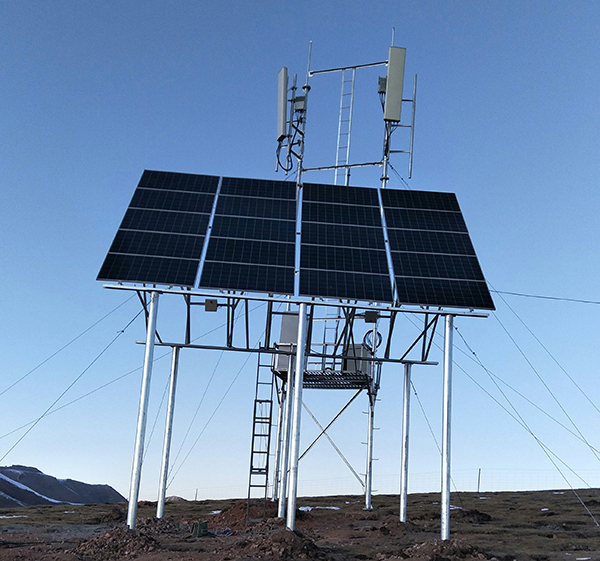Empowering a Strong Nation through Base Stations|Nanjing Oulu Electric’s Solar Photovoltaic Systems Resolve Power Supply Challenges in Communication Base Stations

In today’s rapidly evolving digital era, the construction of communication infrastructure is of critical importance. As a country with massive investments in infrastructure, China accounts for approximately 40% of the world’s base stations. Behind this impressive number lies a significant challenge: ensuring a stable power supply.
When considering base station deployment in remote and geographically complex areas such as grasslands and mountainous regions, it becomes evident that the national power grid cannot fully cover these locations. Moreover, the high costs associated with introducing grid electricity make this option less feasible. Against this backdrop, solar photovoltaic (PV) power systems for communication base stations have emerged as an efficient and sustainable solution to ensure stable and reliable power.
For over a decade, Nanjing Oulu has specialized in this field, accumulating extensive practical experience and providing dependable support for the stable operation of communication base stations.
Our solar PV power generation system for communication base stations is fully equipped and highly integrated. It includes solar panels, energy storage batteries, PV modules, rectifier modules, high-frequency DC power supplies, junction boxes, central control and monitoring units, integrated control cabinets, and connection cables. These components can be flexibly configured according to varying load requirements, making the system easy to install and maintain while effectively reducing energy consumption.
The advantages of this system are substantial. It serves as a reliable alternative to traditional diesel power generation, significantly reducing electricity costs for users. At the same time, by minimizing reliance on conventional energy sources, it greatly cuts carbon dioxide emissions, contributing to the development of a low-carbon society. This integration of technology and environmental protection adds a touch of innovation and sustainability to the beautiful natural landscapes.
Within the integrated control cabinet for communication base stations, components such as the central control and monitoring unit, PV modules, rectifier modules, high-frequency DC power supplies, and the integrated cabinet itself work in close coordination to ensure reliable operation.
▶ The rectifier module converts 220V AC power from the grid or diesel generators into 48V DC power, supplying mobile loads or charging lithium batteries. The PV module, on the other hand, steps down solar-generated electricity to 48V DC to power loads or charge batteries. Both function as unidirectional power supply modules.
▶ Acting as the "brain" of the entire system, the central control and monitoring unit precisely manages the operation of PV modules, rectifier modules, and loads. Through parameter settings within the monitoring unit, it controls activation and deactivation timing for primary and secondary load shedding, as well as charging start/stop operations.
▶ The monitoring system supports remote connectivity via RS485 or Ethernet RJ45 interfaces, enabling real-time supervision of power generation data across all system levels within the integrated controller. Key operational data is displayed through intuitive, detailed, and user-friendly visualizations, enhancing the human-machine interface and simplifying real-time oversight.
▶ The primary and secondary load shedding design in the integrated control cabinet is particularly innovative. Critical loads are connected to secondary shedding, which has a lower cut-off voltage—ensuring continuous operation of essential equipment even when battery levels are critically low. Primary shedding is used for high-power but non-critical loads; these are disconnected first when battery capacity is depleted, thereby extending the uptime of important loads. Clear labeling of primary and secondary shedding terminals inside the cabinet ensures operational accuracy and safety.
To date, our systems have delivered robust performance in support of major clients such as China Tower, China Mobile, and China Telecom. Even in demanding environments like the Qinghai-Tibet Plateau and other remote regions, the system has consistently demonstrated high stability, reliability, and superior performance.
Nanjing Oulu remains committed to innovation, sustainability, and efficiency as we continue to refine and enhance our solar PV power solutions for communication base stations, contributing ever-greater momentum to the development of the telecommunications industry.